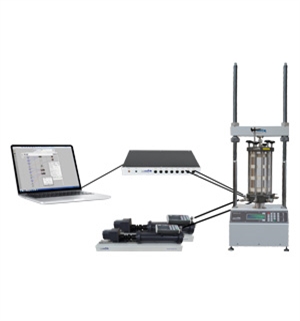
| GDSTAS – Triaxial Automated System
The Triaxial Automated System (TAS) is a load frame based triaxial testing system. The system is configured by choosing from a range of load frames, triaxial cells, pressure controllers and software. The system can be configured as a multi-station commercial testing apparatus right through to high range rock testing at research level. If an existing triaxial system requires upgrading, parts of the TAS system can be incorporated with existing equipment (including those from other manufacturers) to perform the upgrade. Typical drained and undrained shear strength parameters, such as the angle of internal friction and cohesion, can be obtained from the TAS to enable tunnel stability assessments to be made when designing and constructing new underground spaces. |
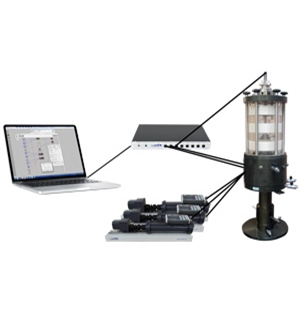
| GDSTTS - Triaxial Testing System The Triaxial Testing System (TTS) is a fully automated triaxial testing system designed principally for stress path testing. The TTS is based on the classic Bishop and Wesley type stress path triaxial cell, which applies axial and radial stresses directly to the soil specimen. Stress paths that relate to a specific construction sequence for an underground space may be applied to test specimens in this system, allowing the unique soil response to be observed and tunnel designs adjusted accordingly. |
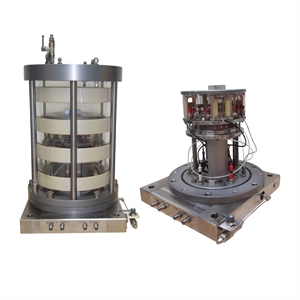
| GDSRCA - Resonant Column Apparatus The Resonant Column Apparatus (RCA) is used to obtain values of the shear modulus, Young’s modulus, and damping coefficient across the small to medium shear strain range (<1 %). This is achieved through use of an electro-magnetic drive system, which applies high frequency (15 – 300 Hz) torsional or flexural cyclic loading to saturated and consolidated cylindrical soil specimens. Note the system can also be upgraded to carry out torsional shear tests in the 2 Hz and below frequency range, allowing the full shear stress-strain behaviour to be observed. Parameters gained from a resonant column apparatus allow advanced analytical and numerical response analyses to be conducted, such as those using finite element or non-linear analytical methods, enabling the soil response surrounding or above a tunnel to be assessed. |
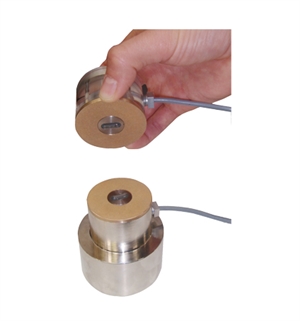
| GDSBES - Bender Element System The Bender Element System (BES) enables measurement of the small strain shear modulus of a soil, a parameter important when conducting advanced analytical and numerical response analyses of soil surrounding a tunnel or other underground space. The system is unique in that it has been designed to make bender element testing reliable and easy to perform, with a signal hardware box used to generate and record propagated compressional (P) and shear (S) waves. The BES system can be added as an option to most GDS laboratory test systems, as well as laboratory systems produced by other manufacturers. To date bender elements have been installed in triaxial and resonant column systems, as well as consolidation, direct simple shear systems and unconfined core holders.
|
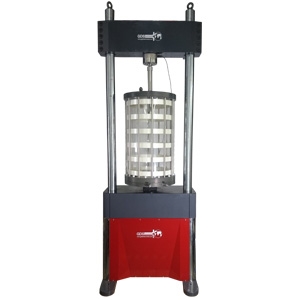
|
The GDS Virtual Infinite Stiffness loading system (GDSVIS) is the premier load frame in the GDS range with load capacities of 250kN to 400kN. The GDSVIS load frames are designed to be stiffer than classical loading frames. This is to allow more accurate testing of stiffer specimens with less equipment compliance. Furthermore each GDSVIS is internally calibrated to allow automatic self-compensation for any remaining compliance. This type of frame is exclusive to GDS. When combined with a triaxial cell, pressure/volume controllers, and data acquisition, the GDSVIS enables typical drained and undrained shear strength parameters to be determined for use when designing and constructing new underground spaces. |
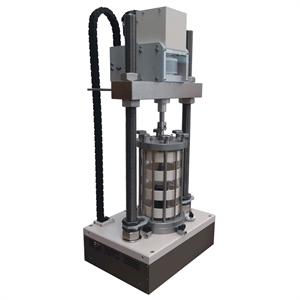
|
The GDS Enterprise Level Dynamic Triaxial Testing System (ELDYN) is an entry level dynamic triaxial system, based on an axially-stiff load frame with a beam mounted electro-mechanical actuator. The ELDYN has been designed to fulfill the demand within the geotechnical laboratory testing industry for a lower cost, more basic dynamic triaxial testing system, yet still perform to the very advanced standards that customers expect from GDS. This enables the ELDYN to provide typical drained and undrained shear strength parameters, as well as the cyclic response of soil, for use when designing and constructing new underground spaces. |
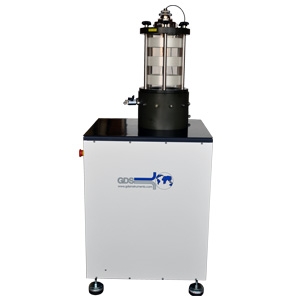
|
The Advanced Dynamic Triaxial Testing System is a high-end, no compromise testing apparatus combining a triaxial cell with a dynamic actuator capable of applying load, deformation and stresses up to 10Hz. The cell itself is screw-driven from an integral base unit housing the motor drive. Axial force and axial deformation are applied through the base of the cell. The system can be combined with a dynamic cell pressure actuator such that cell pressures may also be applied dynamically up to fundamental frequency of the machine (i.e. 2Hz, 5Hz or 10Hz). These features allow the DYNTTS to provide typical drained and undrained shear strength parameters, as well as the cyclic response of soil, for use when designing and constructing new underground spaces. |
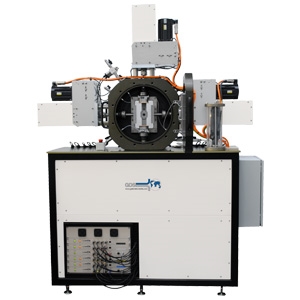
|
The GDS True Triaxial Apparatus (GDSTTA) has the defining characteristic that, unlike conventional triaxial apparatus, all three principal stresses can be controlled independently, rather than just two in a conventional triaxial system. This allows a wider range of complex stress paths to be performed. This dynamic cyclic system is powered by advanced electro-mechanical actuators or optional hydraulic actuators and is an extremely sophisticated research tool. Vertical and one horizontal axis are loaded via the dynamic actuators (axis 1 and 2), stress control is provided for the 2nd horizontal axis, (axis 3) via cell pressure. Altogether the GDSTTA can be used to apply a wide range of stress paths to soil specimens, including those relevant for use when designing and constructing new underground spaces. |
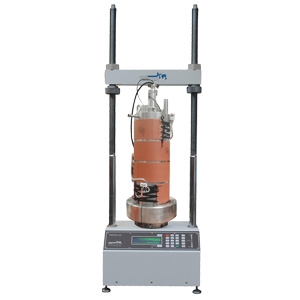
|
The Environmental Triaxial Automated System (ETAS) is a temperature controlled load frame-based triaxial testing system. Key features include, Frozen Soil Testing, Gas Hydrate Testing, High Pressure Testing and High & Low Temperature Testing. The -20oC cooling system provides ideal conditions for frozen soil testing. Its high pressure testing capability (up to 100MPa) along with low temperature provides the ideal environment for Gas Hydrate Testing. The system also has the option for a Heating only system. Such options enable the ETAS to conduct triaxial tests across a range of temperatures and confining pressures, plus provide typical drained and undrained shear strength parameters for use when designing and constructing new underground spaces. |
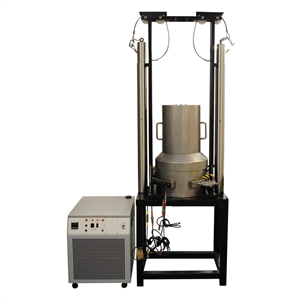
|
The Environmental Triaxial Testing System (ETTS) is a temperature controlled testing system for stress path testing. Key features include, Frozen Soil Testing, Gas Hydrate Testing, High Pressure Testing and High & Low Temperature Testing. The -20oC cooling system provides ideal conditions for frozen soil testing. Its high pressure testing capability (up to 100MPa) along with low temperature provides the ideal environment for Gas Hydrate Testing. The system also has the option for a Heating only system. Such options enable the ETAS to conduct triaxial tests across a range of temperatures and confining pressures, plus provide typical drained and undrained shear strength parameters for use when designing and constructing new underground spaces. |
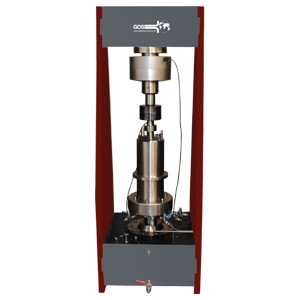
| ST-RTS – Static Triaxial Rock Testing System
Static Triaxial Rock Testing System (ST-RTS) is a triaxial system which enables load application from up to 1MN using a passive triaxial cell and stiff load frame. Triaxial confining pressures of up to 70MPa are common when using this system. The ability to apply high loads and pressures with the ST-RTS makes the system useful when determining strength and deformation parameters of rock specimens as part of the design and construction of new underground spaces. |
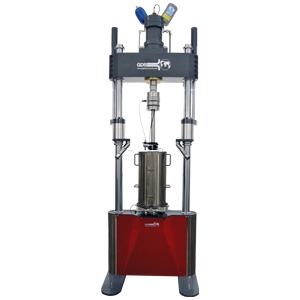
| DT-RTS – Dynamic Triaxial Rock Testing System
Dynamic Triaxial Rock Testing System (DT-RTS) is a cyclic triaxial system designed to apply loads from 250kN, at loading frequencies of up to 5Hz, 10Hz, or 20Hz. Triaxial confining pressures of up to 70MPa may be reached with this system, due to use of a dynamic ratio loader to ensure cell pressures are consistently controlled. The ability to apply high loads and pressures dynamically with the DT-RTS makes the system useful when determining strength and deformation parameters of rock specimens as part of the design and construction of new underground spaces. |
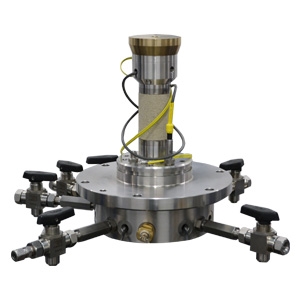
|
Acoustic Velocity (GDSAV) transducers measure the P- and S- wave velocities within a test specimen. Sensors and sources can be mounted in either the pedestal and top-cap, or both sides of the specimen in some cases, enabling acoustic velocities to be measured in multiple directions. Such small-strain information is often required when designing and constructing new underground spaces. |
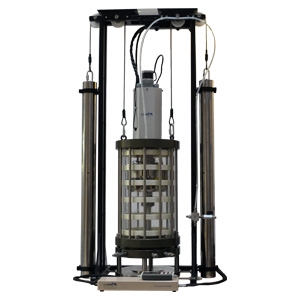
|
Hardin Type Resonant Column Apparatus (HARRCA) is a system that allows specimens to be tested in resonance while maintaining an anisotropic loading. This is achieved by a slender, thin walled loading column passing through the drive system to the top-cap. The GDS Hardin style oscillator contains an electro-magnetic drive system incorporating precision wound coils and composite sintered neodymium iron boron (NdFeB) “rare-earth” magnets. The apparatus can be mounted in a stand-alone system with an integral axial force actuator, or as a cell for integration into an existing load frame. Providing G and D curves for soil specimens, the HARRCA is a useful tool when designing and constructing new underground spaces. |
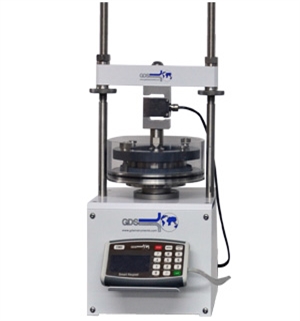
|
The GDS Automatic Oedometer System (GDSAOS) is the modern replacement for a traditional hanging weight oedometer. The GDSAOS is a self-contained stepper motor driven unit that can be controlled using its Smart Keypad, or from a PC using a USB interface. There is no requirement for compressed air or manually placed weights. When used with the GDSLAB control and data acquisition software, the GDSAOS can be used for a complete array of tests beyond those which a hanging weight oedometer can perform. This includes determination of consolidation parameters useful when designing and constructing new underground spaces. |
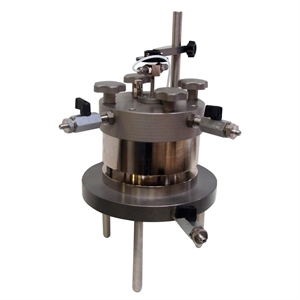
|
The GDS Consolidation Testing System (GDSCTS) is a state-of-the-art, fully-automated consolidation testing system designed for soil. The system is based on the Rowe and Barden type consolidation cell using GDS pressure/volume controllers from the Advanced, Standard, or Enterprise range. Two of these pressure controllers link to the computer, one for axial stress and axial displacement control and one for setting back pressure. Such functionality enables the GDSCTS to determine consolidation parameters useful when designing and constructing new underground spaces, including permeability (with the addition of one pressure/volume controller). |
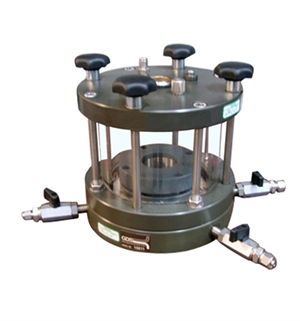
|
The GDS Consolidation Constant Rate of Strain cell (CRS) is designed primarily for advanced commercial testing laboratories who want to reduce the time required to complete a consolidation test. The CRS cell fits either a new GDS or existing load frame in place of a triaxial cell. The load frame-based one dimensional consolidation cell is capable of applying back pressure and measuring pore pressures up to 1MPa (low pressure version) or 20MPa (high pressure version). Overall the CRS system allows consolidation parameters useful when designing and constructing new underground spaces to be determined quickly and accurately. |
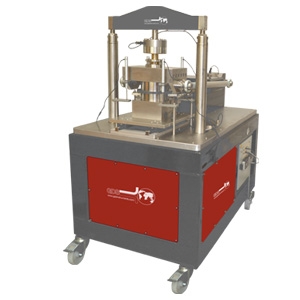
| GDSLADS - Large Automated Direct Shear System (300mm)
The Large Automated Direct Shear system is an electro-mechanical direct shear testing device for specimens of up to 300mm square in size.
|
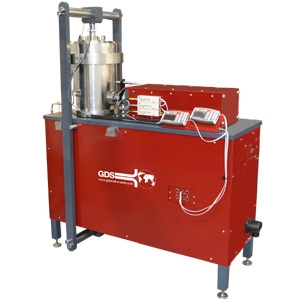
| HPBPS - Back Pressure Shearbox - High Pressure
The High Pressure Back Pressures Shearbox is a high pressure version of the GDSBPS. Normal and shear loads of up to 100kN may be applied to the test specimen, with a back pressure of up to 10MPa available. |